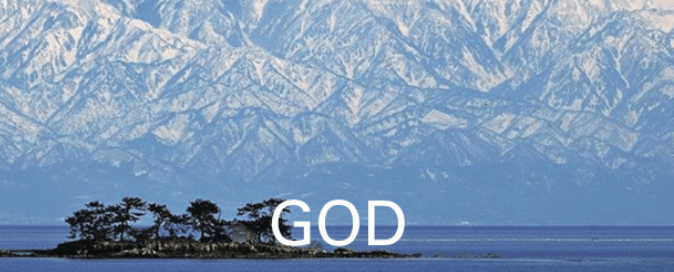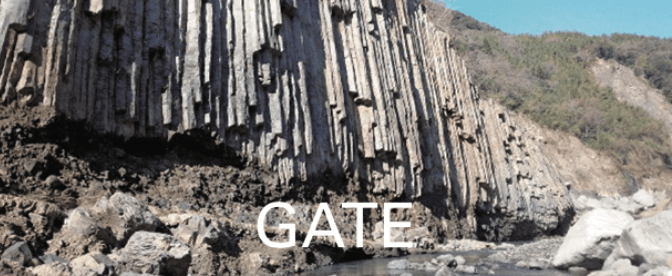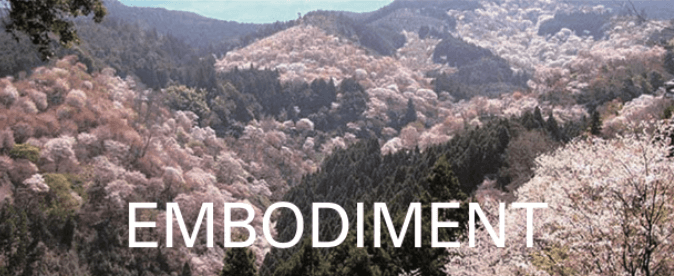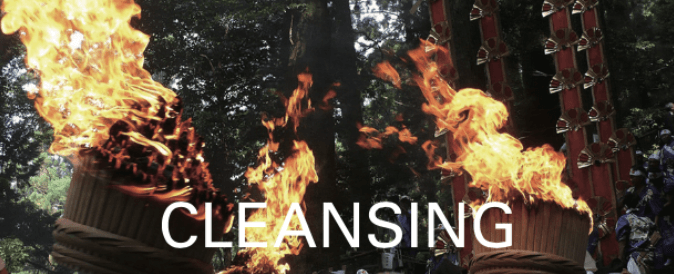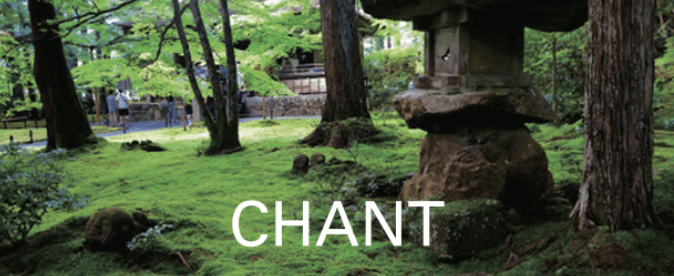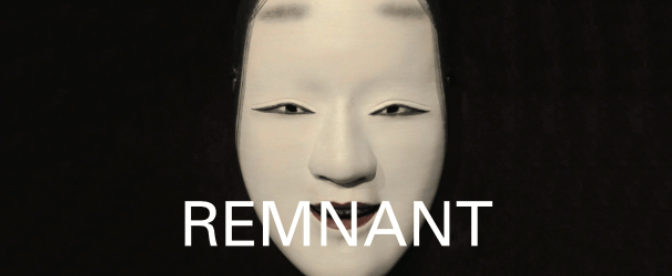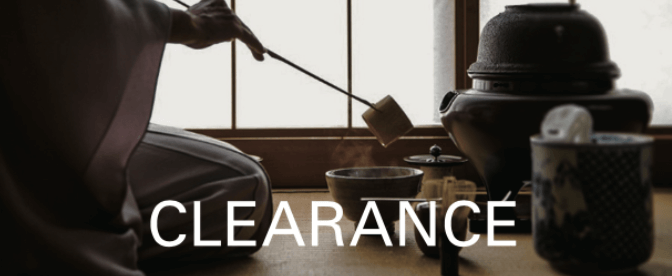
Shokado Shojo (1584 – 1639) was a Buddhist priest attached to Iwashimizu Hachimangu shrine, who was known as Sanpitsu, three famous calligraphers in the Kanei era(1624~44)in the Edo period.
He worked as an intermediary between courtiers in the Imperial court and samurai retainers in the Shogunate, for the meeting of Emperor Go-Mizuno (1596 – 1680) and Tokugawa Iemitsu, the third shogun (1604 – 1651) at Nijojo Castle in Kyoto.
The remnants of Shokado, thatched hut, and Izuminobo shoin, drawing room, were relocated from Otokoyama Iwashimizu Hachimangu shrine to this garden. And the glorious Kinmei Mousouchiku, a thick-stemmed bamboo with glowing yellow stalks and nodes that turn green in summer.
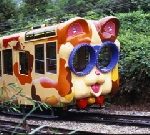
The Ikoma Mountains, rose up from Osaka Ikoma fault zone 1.2 million years ago. The alluvial fan was formed in Kawachi bay, existed since ancient times in Osaka city. The Ikoma Mountains brought grace was Kannabi, a holy mountain. It is said that En no Gyojya (Born 634): a Japanese ascetic and the founder of Shugendo, began the tradition of priests practicing and seeking spiritual enlightenment at the mountains.
Kobo Daishi Kukai (774 – 835), the founder of the Shingon sect, also practiced at the mountains. This cable located on the mountains, connects Honzanji Temple from the Torii, a gate at the entrance to a shrine, in 5 minutes.
The shrine enshrines Kankiten, a god of joy and business. Many people visited here during the Edo period (1603 – 1868). You can easily experience Ikoma, the mountain of grace.
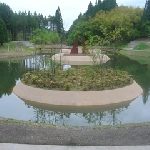
Mt. Murosan features pentagonal and hexagonal, column-shaped rocks, formed by ancient volcanic activity.
The garden has an art space of Dani Karavan (1930 – ), an Israeli sculptor best known for site specific memorials and monuments. His art is known for his magnificent sculptures that can interact with the sunlight and deep green nature with one’s five senses and integrate with the surrounding environment.
He says, “I was born in a holy land filled with memories in a stone and a piece of land.” He was able to read and understand the memories of Mt. Murosan.

This temple has Hiwadabuki, a cypress bark roof and a hip-roofed building, which conveys the remnant of the court noble residence in the Heian period (794 – 1185). It has elegance, with a sense of freshness. The story of the elegance started when Sakanoue no Tamuramaro (758 – 811), the first Shogun, Great General, met Enchin, a priest of the Buddhist Hosso sect of the early of Heian period (794 – 1185) at Mt. Otowasan.
Enchin came from Yamato Province, Nara and founded the temple at Mt. Otowasan, Kyoto, as the expression of a dream. Tamuramaro became a believer of Kannon, the Buddhist Goddess of Mercy, after meeting with Enchin. After Tamuramaro ruled over Ezo, the northern part of Honshuu Island, and triumphantly returned to Kyoto, he donated his residence to Enchin. Then this elegant temple was created.
Okunoin, Inner sanctuary, overlooks the main temple and stage, where Enchin chanted a prayer for Kannon and performed the ascetic practice of siting under a waterfall.
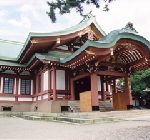
Sugawara no Michizane (845 – 903), a scholar, poet, and Udaijin, a Junior minister in Kyushu’s Dazaifu government office. This shrine was built in 947 in the oracle of Michizane. The current shrine building is Ishinoma Zukuri.
It’s Main Hall and worship Hall are integrated and connected by a low building called Ishinoma, the stone-room, which became the base model of Gongen Zukuri, a style of Shinto architecture in which the main hall and worship hall share one roof, and are connected via an intermediate passageway. Awe-inspriing to Sugawara no Michizane became the Tenjin worship which was called Sennen Tenjisama, a thousand years to worship Tenjin, from the Imperial family to merchants.
This treasure hall that possesses the Kitano Tenjin engi emaki, Illustrated Legends of Kitano Tenjin shrine dedicated to Sugawara no Michizane and other treasures, tells the history. The Kitano Tenjin engi emaki, drew people and landscapes with a dynamic composition and polite expression, on the vertically-connected writing papers, which were normally connected horizontally.
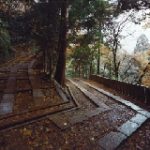
This temple is located in the northern part of Kyoto, which enshrines Sonten, the Holy Trinity of Bishamonten, the Guardian god of Buddhism, Senju Kannon, the Buddhist Goddess of Mercy with a 1000 arms, and Goho Maoson, the king of the conquerors of evil. Shugendo, Japanese mountain ascetic practices, is thriving in this temple, which enshrines the Master of martial arts, Kiichi Hogen. Kiichi Hogen gave the Art of Warfare to Minamoto no Yoshitsune (1159 – 1189) the famous warrior and one of the direct descendant of Minamoto clan.
This temple was also a model of Kitayama-ji, the temple in the Tale of Genji, in the 11th century, a Japanese literature of unique depiction of the lifestyles of the high courtiers. At Kitayama-ji temple, Hikaru Genji, a protagonist of the Tale of Genji, a superbly handsome man and a genius who lived as an imperial officer, met Lady Murasaki no ue, a main character of the Tale of Genji, and the ideal woman of Hikaru Genji.
The front Approach of Ninety-nine Prayers at this temple was described as ”something which is near but also far”, in Makura no soshi, the Pilllow Book, a book of observations and musings recorded in 1002, by Sei Shonagon (966 – 1017), a Japanese author, poet and a court lady who served the Empress Teishi (977 – 1001). This approach may be a preparation for you to encounter wonder.
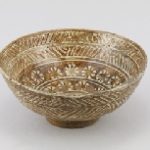
Nomura Tokushichi (1878 – 1945) founded Nomura Securities Co., Ltd. and was the Master of the tea ceremony named Tokuan. In addition to being a Sukisha, a tea ceremony master, and a refined person, Nomura was also a painter, calligrapher, an extraordinarily talented landscape designer, and he was proficient in Noh, a form of theater involving music, dance and drama, developed together with Kyogen in the 14th century.
The museum is near Nanzenji Temple, where a line of villas created an elegant atmosphere for a long time. This museum has 1,500 items including 7 important cultural properties, such as Dankan Satakehon Sanjyuroku Kasen Ki no Tomonori – “Fragmentary Leaves of a Writing” by Ki no Tomonori (850 – 904), a courtier noble and Japanese Poet, and the Satake version of the illustrated hand scroll of thirty-six immortal poets.
This museum introduces the collection sequentially at special exhibitions in spring and autumn. Also, you can also enjoy Jonamagashi, high-grade Japanese fresh confections, and Ryurei Chaseki, a tea serving method using a tea chest, while watching the collection.
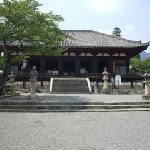
This temple, founded by Marokono-oh, half-brother of the Prince Shotoku (574 – 622), was built as the temple of the powerful Katsuragi clan. This temple is located at the foot of Mt. Futakami (517m odake and 474m medake). The atmosphere feels like the Pure land of Buddhism. The treasures of this temple are a golden statue of Amida Buddha, Amitabha, and the Taima Mandala.
The Mandala was woven in only one night by Chujyouhime, a young lady of noble birth during the Nara period (710 – 794). The Mandala shows the spectacle of the Pure Land of Buddhism. The national treasure East and West three-story pagodas were built in the Nara period.
The Nakanobo garden, which adds to the view of the East pagoda, and the haze on the Taima village give you the feeling of the Pure Land.
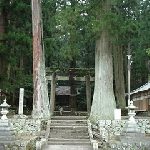
There is a giant tree by the side of the Torii: a gateway at the entrance to a shrine. A cedar entwined branches surround the worship hall, with its Irimoya Zukuri style building: the building with a hip-and-gable roof structure at the precinct.
This shrine has enshrined Ryujin (dragon god), which controls rain and cloud, since ancient times. It is located at the entrance to the valley about 1km from Muroji Temple, which was once the Jinguji Temple: a Buddhist temple within this shrine.
There is the Ryuketsu: the hole of Ryujin in its rear shrine, which is broken rocks enshrined with Shimenawa: sacred rice-straw ropes. The Imperial court has worshiped well the Ryujin and prayed for rain since the beginning of the Heian period (794 – 1185).
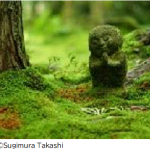
Ohara is located in a small basin that spreads over the countryside at the foot of Mt. Hiei, which used be a village of seclusion for court nobles in Kyoto. They prayed for a peaceful death here. This temple was Monseki Jiin, a temple where the head priest was an Imperial prince who succeeded for generations.
The precincts has green moss laid down on the grounds like felt carpets and the seasonal reflection which invite you to the stage of Shometsumetsui, going beyond life and death before passing away, and Jakumetsuiraku, Freedom from one’s desires.
The garden, Shuuhekien was organized by Kanamori Sowa(1584 – 1657), a master of the tea ceremony and garden designer. Sowa was a son of a samurai lord in the Age of Provincial Wars in the 15th – 16th centuries, and his tea ceremony style was called as Hime Sowa, the tea ceremony style loved by the court nobles in Kyoto. The gardens are as soft and elegant as the tea style of Hime Munewa.
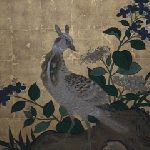
The Shogoin was founded by Zoyo Sojo (1032 – 1116), a monk of the Tendai sect, and Gojiso, a priest who prays for the guarding of the emperor. Zoyo inherited the flow of Chisho Daishi Enchin (814 – 891), the 5th head of the Buddhist Tendai sect, at Onjoji (Miidera) Temple. Zoyo was Sendatsu, a guide, and leader of pilgrimages, for visitors of Shirakawajoko, the Retired Emperor Shirakawa (1053 – 1129), to Kumano, Nara. He supervised all the nationwide mountain ascetic trainees at this temple.
There is Jukeizu, the painting of tragopan, in Ninoma, the reception room, of this temple, which was painted by Kanou Masunobu (1625 – 1694), a Japanese painter of the Kanou school, and the founder of the Surugadai Kanou school. Masunobu studied calligraphy from Shokado Shojo (1584 – 1639), a Buddhist priest attached to Iwashimizu Hachimangu shrine, and became an adopted child of Kanou Kouyu, Kanou Tanyu (1602 – 1674), one of the foremost Japanese painters, a leader of Kanou school, who was the grandson of Kanou Eitoku.
He also learned the latest painting methods of the Ming dynasty (1368 – 1644), “reverse perspective” from Ingen Ryuki Zenji (1592 – 1673), a poet, calligrapher and monk who founded the Obaku sect of Zen in Japan. Therefore, the tragopan drawn by Masunobu approaches you like it is moving.

Nagaokakyo was located at the place where the Katsura, Uji, and Yodo rivers join together, and was the capital of Japan for 10 years after Heijyokyo Nara. Nagaokakyo was connected to Naniwa Palace Osaka through the Yodo river, which was reconstructed by Emperor Tenmu (631 – 686). The scale was comparable to Heiankyo Kyoto.
Sugawara no Michizane (845 – 903), a scholar, poet, Udaijin, the Junior Master of Stage, enjoyed poetry and Kangen, Japanese court music with flutes and strings, here along with Ariwara no Narihira (825 – 880), a Japanese courtier and poet. He came back here before the demotion, and left excellent poems and the remnants.
Later, this shrine was built at the site of his remains. The approach is a middle dike that divides the Hachijo-gaike pond for irrigation, ordered by the lord, Prince (Hachijo) Toshihito, the grandson of Emperor Ogimachi (1517 – 1593) and the founder of the Katsuranomiya family. Refinement is aligned over the times.

This shrine began in 656, when Gozu Tenno, the deity of Disease in Mt. Gyuto of the Silla dynasty was transferred to Yasaka villages Kyoto by the mission of Goryeo. The Gion Festival in Yasaka shrine, one of Japan’s three greatest festivals.
It began since that Gion god, Gozu Tenno was worshipped with 66 pikes, erected in Shinsen-en, the garden of Heian-kyo, in the ancient capital in Kyoto, and Mikoshi, a portable shrine was paraded through the capital, praying for the prevention of plagues, after the plagues expanded in various areas in Japan.
A Festival float is mounted with a decorative halberd, which is drawn by Machishu, townspeople, and decorated with the tapestry of the western regions of China and the Gobelin tapestry.
Those let us imagine the journey of Gozu Tenno, a guardian deity of Gionshoja, Gion forest in India, to Japan.
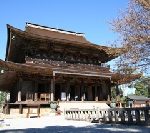
Kongo Zaogogen, the most important deity in Shugendo, a Japanese mountain ascetic practice, is a unique Buddha of Japan that did not originate in India or China.
Kongo Zaogogen is the united Buddha of Shaka-nyorai, Buddha, Senju Kannon, the Buddhist Goddess of Mercy, with 1,000 arms, and Miroku Bosatsu, the Buddha of the Future.
This was made by En no Gyojya (Born 634), a Japanese ascetic and the founder of Shugendo, after his 1,000-day Circumambulation of Mt. Kinpusen – from Mt. Yoshino to Mt. Sanjogatake of Omine Mountain Range. Zao-do, a temple dedicated to Kongo Zaogogen, is the main temple, which enshrines the three statues of Kongo Zaogogen, with about 7 m height.
The Zao-do is 34m tall and 36m in circumference and has Hiwadabuki, a cypress bark roof, which is the largest wooden building in the world.
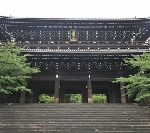
The treasure of this temple is a National Treasure “Honen Shonin Gyojo Ezu” – the picture scrolls of the achievement of Honen Shonin (1133 – 1212), a priest and the founder of the Jodo sect – the first independent sect of Japanese Pure Land Buddhism. This picture scrolls describe the achievements of Honen from his birth to the loneliness and also express his thought, through the Buddhist sermon, the letters and the writings.
The 48 volumes of picture scrolls also include the biographies of his disciples and the achievements of his devotees (emperor/courtier/samurai). It is said that this picture scroll was made by an Imperial order of the Retired Emperor Go-Fushimi (1288 – 1336), by Shujo Hoin (1255 – 1335), a priest of the Tendai sect who converted to the Jodo sect founded by Honen Shonin, at Kotokuin Temple of Enryakuji Temple, Shiga.
The scroll took more than 10 years until completed in 1307. The first half of the scrolls show the style of the court painters in the latter part of the Kamakura period (1185 – 1333).

Ikoma Mountains were formed from the upheaval of the Osaka Ikoma fault 1.2 million years ago. The river from the mountains carried gravel to make the alluvial fan in the Kawachi bay, which existed in ancient times in Osaka city. Mt. Ikoma had been worshiped as Kanabi, a holy mountain.
This shrine enshrines the deity of Mt. Ikoma and it had been revered as the God of fire since ancient times. This shrine was described in Nihon Sokoku Fudoki, description of Japanese regional climate, culture, and others in 458, and dedicated Hikiriki, the tool to make fire, to Daijo-sai, a festival to celebrate the succession of an emperor. The forest of this shrine is awe-inspiring.
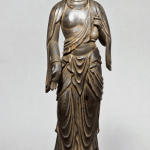
This museum was opened in 1895 as the Imperial Nara Museum. Nara Buddhist Sculpture Hall (formerly Main Building) was originally built and designed by court architect Katayama Tokuma (1854 – 1917). It is also the venue for the Annual Exhibition of Shoso-in, the treasure house of the Imperial Household Agency, which includes Treasures (in autumn) and introduces valuable cultural assets centering on Buddhist art.
There is the statue of the eleven-faced Kannon, the Buddhist Goddess of Mercy, with a pitiful, boy-like expression. It was made by Zen Ei (1197 – 1258), a sculptor of Buddhist images, in 1221. It is believed that it was made as Honjibutsu, the original Buddhist divinity of a Shinto’s god from Kasugataisha Shrine.
– In Japan, historically, the Shinto’s gods and Buddhist divinity had been inextricably linked to worship. It is called “Shinbutsu-shugo”, – the syncretism of Shintoism and Buddhism.

This temple is the Kannon Reijo, sacred place of Kannno, the Buddhist Goddess of Mercy, that represents Japan. It was founded in the first half of the 8th century and this land (Hatsuse) has been sacred since then.
In 727, Tokudo Saint enshrined the statue of the Eleven-faced Kannnon, is the principal image of this temple, with the spirit tree that flowed from the province of Omi, Takashima.
The present principal image is the largest wooden Buddha in Japan, with a height of more than 10m. It was made in 1538 by Unshu, the great sculptor of Buddhist statutes. The tranquility of the principal image and landscape of Hatsuse synchronize well. Hatsuse was described in the Manyoshu, the 8th century anthology of Japanese poetry.
The imperial princess of Emperor Tenmu (631 – 686) did the purification here for Ise Saio, the God serving in Ise Jingu.

This shrine is located in a place with a good view, close to the Nachinoootaki, Nachi cascade. According to this shrine’s legend, Emperor Jinmu came from the Kumano-nada Sea, the sea off the coast of Kumano, and landed on the coast of Nachi.
The Emperor entered Yamato, the central domain of ancient Japan, safely with the guidance of Yatagarasu, a Japanese mythological big crow and a sacred symbol of the sun god under the protection of the Nachinoootaki.
In fact, the history of the native people enshrining Nachinoootaki as a god has also been transmitted. Inevitable causality and accidental chance made history cross at the landscape, preserving the memories from ancient times.
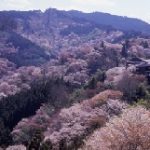
Yoshino is the start of the mountain trail to Mt. Kinpusen. En no Gyojya (Born 634), a Japanese ascetic and the founder of Shugendo, Japanese mountain ascetic practices, realized fundamental truths of Kongo Zaogogen, the most important deity in Shugendo: Japanese mountain ascetic practices, in the latter half of the 7th century.
En no Gyojya carved the figure into cherry trees, and enshrined them on Mt. Sanjogatake, and Mt. Yoshino. Since then, many cherry trees have been planted as sacred trees and Yoshino became the famous place for cherry blossoms.
You can experience the mystery of nature, the power of living things, and its significance in the experience of Mt. Omine Shugendo, Japanese mountain ascetic practices, which is accompanied by the Japanese mountain ascetic pilgrims, who finished the 100 Day Circumambulation in Mt. Omine at Kinpusenji Temple.
You can also experience the prayers of Fujiwara no Michinaga (966 – 1028), who was the Regent controlling the sovereign through matrimonial links to Emperor.
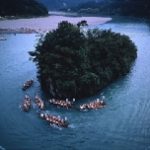
This shrine is one of the three Kumano Sanzan shrines that had been worshiped since the Middle Ages, from the Emperor Emeritus to the common people. This shrine enshrines Izanagi, a male deity who fathered Japan and Izanami, a female deity who mothered Japan, in the mythology of Kuni-umi (the birth of the land of Japan), along with gods praised as Kumano Jyunishodaigongen.
It’s annual festival is held in October, and is a National designated important intangible folk cultural property. The festival recreates the scene of the gods descending from Takamagahara, the heavens, to this shrine, through the Kumano River, by divine boat.
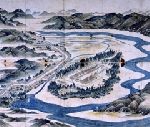
Kumano where spectacular mountains, clear streams and waterfalls are, are holy sites of mountain beliefs from the Heian period (794-1185). Kumano is the sacred place for the syncretism of Shinto and Buddhism, and the yearning place that it regards as Pure Land. Retired Emperor and noblemen also traveled to Kumano for religious purification.
Before the Great Flood happened in 1889, this shrine was built in Ooyunohara, the sandbank between the Kumano River and the Otonashi River. Every pilgrim, without exception, crossed the river, dipping their feet in the cold water, as a purification ceremony when entering the sacred place.

This museum introduces cultural properties associated with the Tokugawa Family of the Kishu Wakayama Domain. It also has World Heritage, Sacred Sites and Pilgrimage Routes, Mt. Koya and Kumano, where nature and gods overlap, by Nachinomiya Mandalazu, the pilgrimage guide to Kumano Nachinomiya shrine, and others.
This museum possesses Gantoshishiokimono, which is the excellent masterpiece of prized ornaments called Kokawasaku, made in Kokawa Town Wakayama, in the Edo period (1603 – 1868).
This ornament shows the Ancient Chinese narrative, which was Shishi, the divine beast that kicked their kids down to the valley, to increase their chance of survival. Many civilizations from abroad, like copper-lead alloy castings, came through the Kinokawa River since ancient times. Kokawa Town is located along the river.
The foundry industry such as Buddhist altar fittings had flourished in Kokawa Town since the Middle Ages.
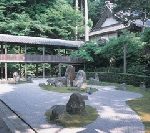
This temple near Hikonejo Castle is a Bodaiji temple with Ii family grave. Ii family had served the Minamoto clan since the Heian period (794 – 1185) and came from Mikawa Hamana Lake, where Ryotanji temple used to be and was famous for the garden by Kobori Enshu (1579 – 1647), a feudal lord, a master of the tea ceremony, an architect and garden designer. The Ii family moved the temple close to Hikonejo castle in the Edo period (1603 – 1868).
Hojo, the abbot’s chamber of this temple, has 104 sliding screen paintings, drawn by Morikawa Kyoriku (1656 – 1715), as one of Basho Jittetsu, the ten representative pupils under Matsuo Basho (1644 – 1694), the most famous poet of the Edo period. Those paintings deeply unite the aesthetic with the eastern garden.
Hojo’s southern garden has a group of 48 stones on white sand, which represents the Pure Land, Paradise of Mount Potalaka in the seas south of India, the mythical dwelling of Kannon, the Buddhist Goddess of Mercy. It used to be able to commute from the temple to Hikonejo Castle by boat.
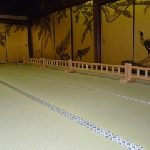
This temple was founded in 745 by Gyoki (668 – 749), a Japanese Buddhist priest and organizer of public works projects, like irrigation, and an ancient temple of the Shingon sect of Mt. Koyasan. It is also known as “Okyo’s Temple”. Maruyama Okyo (1733 – 1795) was a painter and the founder of the Maruyama school of painting, was born in Tanba Province, Kyoto and received financial support from the chief priest of this temple.
Okyo returned to this temple with his disciples, after becoming a popular artist in Kyoto. He left the Fusuma-e, a picture painted on a sliding paper door, in about 13 rooms. Wall paintings of Kyakuden, a reception hall, follow a well-calculated layout.
This is revealed in the composition of the meditation space, where a three-dimensional Mandala, a geometric configuration of symbols used as a spiritual guidance tool in Buddhism in Japan.
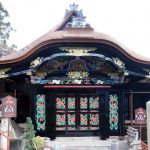
—A major repair to restore the splendor decoration of the Karamon Gate ended in May 2020.
The National Treasure Karamon Gate is made with Hiwadabuki, cypress bark roof. This gate was the relocated Gokurakumon gate, from Toyokunibyo in Higashiyama Kyoto, in the rebuilding of this temple by Toyotomi Hideyori (1593 – 1615): the son of Toyotomi Hideyoshi, in 1603.
It was part of a mausoleum dedicated to Toyotomi Hideyoshi (1537 – 1598): the powerful feudal lord and Imperial Regent who unified Japan. The splendor decorated with richly colored sculptures and metal fittings was a typical relic of Karamon Gate in the style of the Azuchi-Momoyama period (1573 – 1603).
It was also pointed out that it was originally part of the Gokurakubashi bridge, which crossed a moat at the north side of the Osakajo Castle keep. It was described as a distinguished and shining golden bridge. That means that this gate is also the only remains of Osakajo Castle tower, by Hideyoshi.
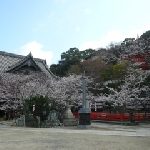
This temple is facing WaKanoura Bay, where poems about the scenery have been written since ancient times. You arrive at it after climbing 231 steep stone steps up Mt. Nagusayama.
This temple was founded in the Nara period (710 – 794), by Iko Shonin, a priest of the Tang Dynasty, when he saw the spiritual light and realized Senju Kannon, the Buddhist Goddess of Mercy with a 1000 arms, at this mountain. Since the founding, the successive emperors had visited and this temple has prospered. This temple name means the temple with three sacred wells. The clear water still springs from those wells.
This main temple has Karahafu, a type of cusped gable. In front of it is Kyu-Ma, Shi-Men, a building that is 16.4m wide and 3.6m deep, with 4 eaves of 3.6m long, made of zelkova wood. This building and architecture show the strong worship at this temple, by the Wakayama Domain, in the Edo period (1603 – 1868).

This museum is located in the precincts of Kumano Hayatama Taisha shrine, which belongs to Kumano-sanzan, the Three Main Kumano Shrines, in World Heritage Sites, Sacred Sites and Pilgrimage Routes in the Kii Mountain Range. The residence of Sato Haruo (1892 – 1964), a Japanese novelist and poet, in Bunkyo-ku, Tokyo, was relocated here, and this museum was opened in 1989.
The drawing room, where many literary-men sat, was restored, and the associated items with Haruo can be seen in front of you. Paintings, books, raw manuscripts, valuable first edition books, etc. are exhibited in the exhibition corner.
The charm, brightness and coolness in Haruo’s poetry and calligraphy, came from growing up here before leaving the city, is understood well here.
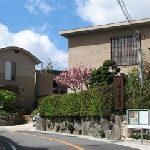
The museum is located in Kotoen, an educational area, rich in greenery, on the Rokko Mountains. It possesses a wide range of antique art from Japan and China, such as Akarakujawan, a Red Raku tea bowl, named Muichibutu, by Raku Chojiro (died 1592), the first generation in the Raku family line of potters. Raku worked for Sen no Rikyu (1522 – 1591), the greatest tea master, the tea master to the military dictator of Japan, Oda Nobunaga and Toyotomi Hideyoshi, and the inventor of the wabi-sabi style of tea ceremony.
The museum’s collection also includes: Mandala drawings, Suibokuga: ink painting, Chinese porcelains, and Bokuseki, ink calligraphy of masters and high priests. The Egawa family engaged in Kaisengyo, shipping and trading, and the forestry industry in the Edo period (1603 – 1868), and contributed to the cultural development of Nagasaki and Kamigata (Kyoto and Osaka area). They were also a distinguished family of Totsuji, Chinese translators in Nagasaki during the Edo period, who, over many generations, played a diplomatic role in Nagasaki trade.
– This museum is temporarily closed.

This temple is an ancient temple which was founded in 651, by Hodo Senin, who came from India to Japan around the 6th -7th centuries and opened famous and Imperial temples in Harima and Setsu Provinces, Hogyo.
This National Treasure, the main temple, is typical Esoteric Buddhist temples in the Muromachi Period (1366 – 1573). It has Setchu-yo, Japanese-style architecture, with added elements of traditional Chinese-style architecture.
The main principal of this temple are two wooden statues of Senju Kannon, the Buddhist Goddess of Mercy with a 1,000 arms. One of the statues was made in the latter part of the Kamakura period (1185 – 1333) and was moved from Rengeoin Temle Sanjusangen-do, in Kyoto.
-150x150.jpg)
In 754, Ganjin (688 – 763), a Chinese monk who helped propagate Buddhism in Japan, performed Kaidan at Todaiji Temple Daibutu- den (the Great Buddha Hall), at the first time in Japan.
-Kaidan is the ceremony that officially names a priest to the monks.
It is also said that this temple was founded by the leading disciple of Ganjin in 806.
The temple is situated on a hill in Arida City, along the Kii Channel and the Arida River, where overseas cultures arrived, since the ancient times.
Next generation Buddhist sculptures, by Unkei (1150 – 1223), a Japanese sculptor of the Kei school, during the Kamakura period (1185 – 1333), are lined up at this temple, guarding the main temple and Tahoto, the two-story pagoda with a square base, pent roof and round top.
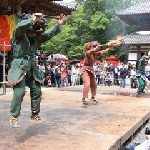
It is the ancient path of Mt. Mikusa, where you can see the waterfall named Tskubane, truelove flutters with four bracts. It leads to Chokoji Temple, where Shugendo, Japanese mountain ascetic practices, was thriving. The temple was founded in 651, by Hodo Senin, who came from India to Japan around the 6th -7th centuries and opened famous and Imperial temples in Harima and Setsu Provinces, Hogyo.
The temple has Onioi Odori, the dance performance with Okina, an old man and Oni, Ogres, to pray for the harvest and good health. The performance has continued since the Muromachi Period (1366 – 1573). This ancient path might be the footsteps of ancient immigrants who had developed the veins.
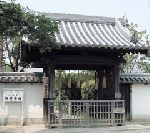
It is said that this temple is “Hama no Yakata” – the Akashi residence of Hikaru Genji, a protagonist of the Tale of Genji. Genji was a superbly handsome man and a genius who lived as an imperial officer. The Tale of Genji is a unique depiction of the lifestyles of high courtiers in the 11th century, by Murasaki Shikibu (973/978 – 1041/1031), a Japanese novelist, poet and court lady.
In the past, reeds and bamboo were overgrown, and it was called Oyabu, a big grove. People did not often pass, and the earthen walls of the temple were lined up, where the ivy was twined with the bamboo.
“Tsutano Hosomichi, – Ivy Lane” in the front of the Sanmon, the main gate of the temple, has been shown as the road through which Hikaru Genji had visited “Okabe no Yakata,” the residence of Lady Akashi. The gate was decorated by Hidari Jingoro, a master sculptor from Akashi Harima Province in Hyogo, who was active around 1596 – 1644 in the beginning of the Edo period. Genji Inari Shrine, is enshrined on the left side of the gate.
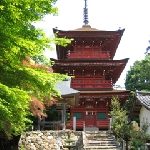
This shrine was built in 1024 as an associated shrine of Iwashimizu Hachiman Shrine. Excavated mirrors and cornerstones and roofing tiles from the Hakuho era, during Emperor Tenmu and Empress Jito’s reign in the late of the 7th century, indicate a deep connection to the Imperial Court since ancient times.
Toyotomi Hideyoshi (1537 – 1598), the powerful feudal lord who unified Japan, and the Imperial Regent, built the shrine in 1585. It was destroyed by fire in the war, during the period of the Northern and Southern Courts (1336 – 1392).
There is a bell tower behind the shrine building, containing the bronze bell collected by Hideyoshi for cannon casting. That guides the history of Shinbutsu-shugo, the syncretism of Shintoism and Buddhism with the three-storied pagoda rebuilt during the Edo period in the 17th- 19th centuries.

This temple was founded by Chogen (1121 – 1206), a Japanese monk devoted the rebuilding of Todaiji Temple. A National Treasure, Jodo-do temple was dedicated to Amida, Amitabha, the principal image of Buddha in Pure Land.
It was designed in Daibutsu-yo, a style of Japanese Buddhist temple architecture during the Kamakura period (1185 – 1333). It uses many beams and joints to support the high ceiling. The principle image of Jodo-do is the standing statues of the Amida triad, by Kaikei, a sculptor of Buddha statues from the Kei school during the Kamakura period (1185 – 1333). Kaikei was familiar with Chogen.
The Jodo-do is located in the western precincts and the statues of the Amida triad are standing to face east. When latticed shutters behind the statues open in the setting sun, the whole Jodo-do turns a deep red and the reservoirs in the distance carry the light of the west. The scenic and space designed was all about the scene of Raigo, the coming of Amida to welcome the spirits of the dead from Pure Land in the west.

This temple was founded in 1533 by Kensho Shonin, which stands with Shatsukei, borrowing the landscape of Tatsunojo Castle. This temple has a complex of buildings, in a row: the main temple, the Kaizando, the hall dedicated to the founding priest, the bell tower, the Sanmon, the main gate of the temple, the Kuri, a temple kitchen, and the Kyakuden, a reception hall, which was the family cemetery of the Wakisaka family, feudal lords of Tatsuno Domain, and their enshrined mortuary tablets.
This temple possesses Nehan-zu, the 1651 painting of the Buddha immediately after his death by Kanou Eino (1631 – 1697): a Japanese painter and a leader of the Kyoto Kanou school of painting. Also in the year 1651, The Keian Uprising took place. It was a failed rebellion against the Tokugawa Shogunate by Yui Shosetsu (1605 – 1651), a military strategist. The Wakisaka Family were members of the Tokugawa Shogunate’s council.
There is a monument inscribed with a poem and Fudezuka, the burial mound of Miki Rofu (1889 – 1964), who came from Tatsuno and was a poet and children’s book author.
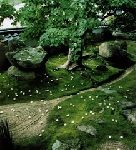
This temple has a beautiful garden, “Sarasoju-en, a sal tree garden”, where a large, 300 year old sal tree stands. The principal image of this temple is the standing statue of Amida, Amitabha, the principal image of Buddha in Pure Land, which is said to have been made by Kaikei, a sculptor of Buddha statues from the Kei school, during the Kamakura period (1185 – 1333).
This temple was founded in 1532 by Kyoyo Shonin, a priest of the Jodo sect. It stands on the site of the villa on the hill, built for Nene Kodaiin (died 1624), the principal wife of Toyotomi Hideyoshi (1537 – 1598), the powerful feudal lord and Imperial Regent who unified Japan. Historical events in China – “Susume Umini Hairite Hamaguri tonaru – Sparrows entering the sea have become clams, which means unexpected changes will happen, and everything will be changeable in time.”
There are sparrow stones and clam stones in the garden. The ambition and the miscalculation – The Toyotomi clan lost the power in the Battle of Sekigahara in 1600.
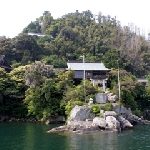
Chikubujima surrounded by a 2km sheer cliff, floats about 6km far from the lake shore of Nagahama city, is the island where Gods reside. This shrine enshrines the Goddess of Biwa Lake, Azaihime no mikoto, was worshipped here to ensure the safety of water traffic on the lake. This shrine building is directly connected with Kannnon-do Hall of Hogonji temple, by a corridor called Huna-roka.
Hogonji temple is dedicated to Sarasvati, the god of wealth, music eloquence and water. It also has the remnants of Fushimi Castle, Kyoto. It has Fusumae, a picture painted on a sliding paper door, and a picture painted on a ceiling, by Kanou Mitsunobu (1565 – 1608), the eldest son of Kanou Eitoku, who was one of the most influential Japanese painters, and a head of Kanou school of Japanese painting. Non-public.
There is the worship hall after going down through the stone steps from the shrine building, where Taira no tsunemasa, warrior of the Taira clan, and biwa, the lute musician, appeared in the Tale of the Heike, Narrative poetry of the struggle between the Heike (Taira) clan and the Minamoto clan for control of Japan at the end of the 12th century.
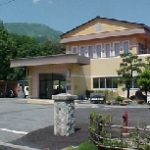
This museum renovated, by hand, a closed school and focuses on the nature and culture of Mt. Ibuki and its foothills. This museum exhibits items along with tools, such as excavated properties from the Jomon period (16,000 years ago – 3,000 years ago), and products and methods using medicinal herbs from Mt. Ibuki since ancient times.
Most of the medicinal herbs and seeds that were offered to the Impartial Court during the Heian Period, were from Mt. Ibuki Omi Province Shiga, according to the Engi-Shiki, the code of Japanese governmental regulation in the 10th century.
Ibuki mogusa (moxa used for healing) was a well-known product, which was sold all over the city during the Edo period (1603 – 1868).
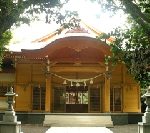
This shrine is located in Jike Suzu Ishikawa of the northernmost tip of the Noto Peninsula. It is wrapped in a natural monument Chinjunomori, the sacred grove of the village shrine and is revered as the guardian deity to Kimon, the unlucky quarter of the northeasterly direction in the Japan Sea.
This shrine possesses five wooden seated statues of Japanese male gods. Those statues have different expressions on their faces, with full court dress of traditional fashion in the real beauty style. Minamoto no Yoshitsune (1159 – 1189) the famous warrior, one of the direct descendants of the Minamoto clan, prayed for the safe crossing the sea of his company to Mutsu Province, in the northeast direction.
This shrine possesses Semiore no fue, a sacred flute, which Minamoto no Yoshitsune dedicated, and a short sword of Mamorigatana, a sword for protection, which Musashibo Benkei (1155 – 1189), a Japanese famous warrior monk who served Minamoto no Yoshitsune, dedicated. Those treasures are National designated cultural property and the proof of historical facts.
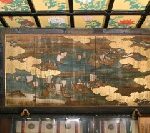
Hakusan shrine in Niigata City is the shrine of Sochinju, the central place to pray for local gods in Niigata. Niigata harbor used to the largest port of call to Kitamae-bune, cargo ships that sailed the Japanese Sea during the Edo period (1603-1868). The Ema, the votive picture of a horse, dedicated to the shrine frequented by those on the Kitamae-bune, reminds us of the prosperity of Niigata harbor. This shrine enshrines Hakusan Okami, Kukurihime no mikoto as the main enshrined deity, a goddess transferred from the sacred peak, Mt. Hakusan(2702m) in Kaga, Ishikawa. Kukurihime no mikoto has the power to bring harmony and connection to confused situations.
Uesugi clan repeatedly fought with Shibata clan in the Age of Provincial Wars, in the 17th century. Hakusan Okami was enshrined in the castle of Shibata clan. It was said at this shrine that the Uesugi clan dedicated the mirror and ceremonial folding fan to the Hakusan shrine on the way home from its victory.
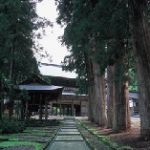
This temple is surrounded by mountains on three sides and stands so that it is protected by a 700 year old tree. This temple was founded by Dogen Zenji (1200 – 1253), a Japanese Buddhist priest, poet, philosopher and founder of the Soto school of Zen, in 1244. Dogen moved down to Echizen, Fukui to avoid conflict with the Old Buddhism schools in Kyoto.
He thought that the Buddha was just Zen Meditation, and the enlightenment was just in its training. The precincts are connected with the complex of temple buildings with seven major structures and about 70 pantheon and multistoried buildings along the corridors. It is as clean as it was in the beginning.

The three-storied pagoda at Bessho Onsen in Ueda City is the only Hakkakuto, octagonal pagoda, currently existing in Japan, an unparalleled pagoda made entirely of traditional Zen-style architecture.
There are five details of the Zen style. Ogitaruki, is the fan rafters radially under the surface of the eaves. Sohan, is the horizontal setting between a pillar and a foundation stone. Kashira-nuki, is the head rail, and the wood connected horizontally through the top of the pillars. Kibana is the decorative carving at the end of the timber.
And Dainichi Nyorai, the Supreme Buddha of the Cosmos and the central object in Esoteric sects of Buddhism, is enshrined at the octagonal Buddhist altar, on the inside, which is rare in Zen temples.
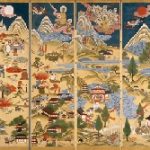
The praying shrine of this shrine stays in a cedar grove of 500 years old, with full solemnity. The main shrine is located at the top of Mt. Oyama in the altitude of 3003 m. The Tateyama mountain range, of which Mt. Oyama belongs, rises to the earth, like connecting heaven and earth.
You can experience there what Japanese people looked up to from the ancient days. In addition, you can realize the history of the 1300 years of Japanese mountain asceticism, by looking at the Tateyama Mandala and valued cultural properties, related to the Tateyama Belief, at Toyama Prefecture Tateyama Museum next to this shrine.
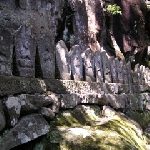
The name came from the Sanskrit for “pure spring.” Since ancient times, pure water has sprung out and it is a Buddhist practice place.
There is a 30-minute hiking course from Myosenji Temple at the foot of the mountain, to Kannon-do, temple dedicated to Kannon: the Buddhist Goddess of Mercy, where the hundred stone statues of Kannon, the Buddhist Goddess of Mercy, are deified. There are stone monuments and stone Buddhas along the path. Seningatake, an observatory, is a 5 minutes’ walk from Kannon-do.
You can overlook Sakudaira where there used to be an ancient government horse ranch, Mochizuki no Maki.

The name of Azumino City is derived from the marine clans. The Azumi clan was based around Shikanoushima Island in Fukuoka, northern Kyushu, and moved here in ancient times. Hodakajinja shrine in Azumino City enshrines Hotakaminomikoto, the Ancestor god of the Azumi clan and its rear shrine is located at Kamikochi, the foot of Hotakadake(3,190m), the Northern Alps.
In the northeastern region of Nagano City where the Saigawa River joins the Chikuma River, Dotaku, Bronze bells were excavated, which indicate the ancient connection with the Izumo, Shimane and the northern Kyushu areas.
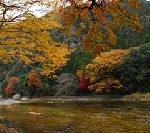
The Horaikyo Valley, which extends approximately 5km across the upper and the lower reach of the Uren River, is surrounded by beautiful mountains such as Mt. Horaiji.
You can fully enjoy the lively power of the forest that accumulates abundant water inside. You will get a powerful impression from the “Ukiishi Bridge” in the front of the waterfall.
-After Odai no Kata (1528 – 1602), mother of Tokugawa Ieyasu (1543 – 1616): the founder of the Tokugawa Shogunate, stayed at Houraiji Temple at Mt. Houraiji, which had been worshiped as a holy mountain, she had Ieyasu.
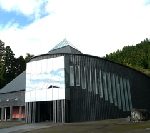
This museum is located at Ashikuraji at the foot of the Tateyama Mountain Range. The museum display consists of a philosophical exhibition, where you can experience the idea of the Tateyama Belief, through a diorama, and a structure exhibition that you can visually understand, with videos and others. This museum’s exhibits convey the history of 1300 years of the Tateyama Belief and Shugendo: Japanese mountain ascetic practices, valuable cultural assets related to the Tateyama Belief, including the Tateyama Mandala, which depicts scenes of Buddhist paradise and hell, sightseeing spots and stories of the region, by which people could understand the world of Tateyama Belief, even if people could not climb the mountain.
This museum also introduces a simple view of nature that is in awe of the mountains, which are the source of water, fuel and other living resources, before Shugendo.
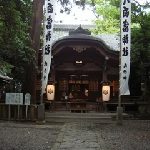
Takeshima Island, a 620 m granitic island, is connected to the land by the Takeshima-bashi, the bridge of Enmusubi, a match-maker. The vegetation of trees in this island is different from the opposite shore, with over 200 species of plants.
There is this shrine in the center of this island which transferred the separated spirit from Chikubushima Island, Shiga, by Fujiwara no Shunzei (1114 – 1204), a noted Japanese poet and aristocrat. Chikubushima Island is at the northern end of Lake Biwa and is the island Gods resided.
Fujiwara no Shunzei was the authority of Japanese Waka poetry and the compiler of Senzai Wakashu, an imperial anthology of Japanese Waka poetry in 1187, at the behest of the Retire Emperor Go-Shirakawa (1127 – 1192). This shrine is counted as one of the seven biggest Sarasvati temples in Japan.
Sarasvati is the god of wealth, music eloquence and water. This shrine worships Ichikishimahimemikoto, one of Three Goddesses of Munakata, the Water Goddess in Japanese mythology.
—This is the historical praying style of Shinbutsu-shugo, the syncretism of Shintoism and Buddhism, in Japan.
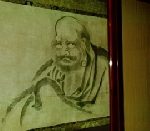
This temple in Gero City is the predecessor of Entsuji Temple, which was connected to Eshin Sozu Genshin (942 – 1017), the 18th head of the Enryakuji Temple and compiled in Ojoyoshu, “Essentials of Birth in the Pure Land”. This temple has a complex of temple buildings in the style of the Song Dynasty (960 – 1279).
This temple possesses “Haponirami Dharma”, Dharma glaring in all directions, drawn by Sesshu Toyo (1420 – 1506), a Zen monk and the master ink painter in Japan, as his masterpiece. This temple also has the garden, Banzaido, designed by Kanamori Sowa(1584 – 1657), a master of the tea ceremony and garden designer, who was called Hime Sowa, the tea ceremony style loved by the court nobles in Kyoto.
This garden resembles megaliths, as the water flows between the mountains and pours into Shinjiike pond, a heart-shaped pond. Sowa was a legitimate child of the Kanamori family which developed Hidatakaya, as a castle town.
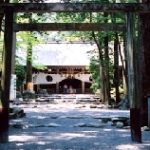
“Japanese style farming in a layered culture” -This shrine, represented by Mt. Nudougatake, enshrines the Great God Sarutahiko, who guides us to the prosperity land of native and exotic cultures. There is a sacred rice field, where rice is grown and is offered at Ise Jinguu Shrine, the Main shrine of the Great Goddess Amaterasu Oomikami: Sun Goddess and the Japanese Emperors are considered to be direct descendants of Amaterasu .
This shrine is the center of Shugendo, Japanese mountain ascetic practices, which was founded by Gyoman Daimyojin God, the founder of Shugendo, and the descendant of the Great God Sarutahiko.
There is a waterfall of Golden Dragon Myojin God in the precincts, and Shishigashira, the remains of a lion’s mask from a ritual dance, which is said to be dedicated by Kibi no makibi (695 – 775), a Japanese scholar and noble.
The ritual dance with Shishigashira in this shrine has a 1,300 year history. -It is said that when the gods’ party of the Great Goddess Amaterasu, landed Japan, the Great God Sarutahiko, guided them.
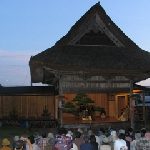
Sado Island is the point of contact between the warm current and the cold current of the Sea of Japan, where Sado Province was established before the 8th century. People and cultures had been transported from Kyushu Island, Izumo Province, Sanin region facing the Sea of Japan in the western part of Honshu Island, and the Noto Peninsula. And the unique culture in Sado Island had been developed, in which nobles, samurai, and common people were unified.
Zeami Motokiyo (1363 – 1443), aesthetician, actor and playwright of Noh, was exiled to Sado Island from Kyoto in the Muromachi Period (1366 – 1573), too. Many Noh theater stages were built in the villages from the richness of the rice-producing region in the Shogun demesne, in the Edo period (1603 – 1868). Noh is a form of theater involving music, dance and drama, which developed together with Kyogen in the 14th century. Kyogen, is the classical comic theater developed from Sarugaku, which is a form of popular pantomime theatre, with drum dancing in Japan during the 11th -14th centuries.
Sarugaku was performed in the villages for praying for a rich rice-producing harvest. Here is the scenery of the origin of Noh and Kyogen, developed from Sarugaku.
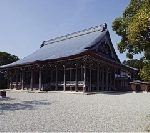
This was the central temple of the Jodo-Shin sect in Echuu Province, Toyama. It originated from the Doyama Gobo Temple founded by Rennyo (1415 – 1499), a head-priest of the Honganji temple, and descendant of Shinran (1173 – 1263), who was the founder of Jodo Shinshu.
The main temple is a huge building measuring about 40m square, which imitated the Amidado of Nishi Honganji Temple, in Kyoto, a temple dedicated to Amitabha, the principal image of Buddha in Pure Land. It is said that it was built on the site of the provincial capital in Echuu Province, with the support of the Maeda family, feudal lord of the Kaga Domain.
The capital in Echuu Province used to be on the Fushiki Plateau, which is near the mouth of the Oyabegawa River, which flows into the Sea of Japan. Otomo no Yakamochi (718 – 785), a counselor in the Imperial court of Japan and a poet, was Kokushu, a governor of a Province, who wrote poems about Toyama Bay from the plateau of the provincial capital.
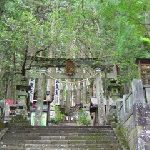
Mt. Ontakesan’s (3067m) highest peak, Mt. Kengamine, the rim of a volcano, has been worshiped as a holy mountain, since it was found in the 7th century.
In the Muromachi period of the 14th- 16th centuries, many mountain ascetics began pilgrimages to Mt. Ontakesan. This shrine has shrines in various places, from the Satomiya shrine at the base of a hill to the rea shrine at the top of Mt. Ontakesan. The rea shrine is open until early September.
You can go to Otakiguchi Tanohara (2160m) by car, which is the seventh station of Mt. Ontakesan. You, too, can experience the awe-inspiring greatness of this place.
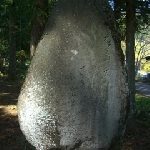
The To family was part of the Chiba clan, a descendant of Kanmu Heishi, The Taira clan originated from the Emperor Kanmu (735 – 806) and was a powerful clan in Shimousa Province.
The To family was based at Tonosho, with an estate in Shimousa Province. After the Jokyu Disturbance in 1221, the fight between the retired Emperor and the Kamakura shogunate, the To family moved and dominated here. At that time, they transferred Myoken Bosatsu, the deification of the North Star from Shimousa Province and funded Myoken-gu, sacred to Myoken. That was the beginning of this shrine.
The To family was the family of Kokin denju, the initiation about interpretation of Kokin Waka shu, Imperial anthology in the 10th century, which was taken into confidence by Minamoto no Sanetomo, the 3rd shogun of Kamakura shogunate.
To Tsunenori, the warrior, the descendants of Fujiwara Teika (1162 – 1241) the Japanese famous poet, the greatest master of the waka, Japanese poem, gave a lecture to Ino Sogi (1421 – 1502), a linked verse poet and Zen monk, at this shrine in 1471. The monument is engraved with Renga, a linked verse poem, remains at this shrine.
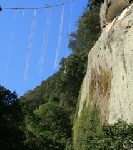
Kumano-nada Sea, the sea off the coast of Kumano, spreads out in the eastern part of the Kii Peninsula. The spectacular coastal beauty shaped by rough waves is made up of Columnar Joint, rock walls with numerous columns.
This shrine is for Izanami, a goddess in Japanese mythology who produced numerous gods and became the ruling goddess of the realm of the dead. Because this shrine sees the rock surface, which is said to be about 45m in height, as the Kura, a container for the soul of God.
There is the festival, which has the ritual song in front of the rocks, adorned with flowers and partakas (flags). It tells us that it was an ancient prayer form of the Japanese archipelago that followed the maritime road.
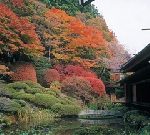
In the Heian period (794 – 1185), Minamoto no Yoshinaka (1154 – 1184), Lord Kiso, a general and the cousin of Minamoto no Yoritomo (1147 – 1199), the 1st shogun of the Kamakura Shogunate, defeated the big army of the Heike (Taira) clan, and proceeded to the capital, Kyoto. Although Yoshinaka was appointed the title of Asahi, sunrising Shogun, he was defeated by the Kamakura Army of Minamoto no Yoritomo in the stratagem of Cloistered Emperor Go-Shirakawa (1127 – 1192). He had a heroic death in his short life.
The departed heir of Yoshinaka which was preserved by Tomoe Gozen (1157 – 1247), a female samurai to serve Minamoto no Yoshinaka, and the second generation of Shigure. The Drizzle cherry, which Yoshinaka planted himself, beside the Kanondo (the temple deciated to Kannon, the Buddhist Goddess of Mercy), remains at this temple.
In front of the Main temple, Karesansui, a dry landscape garden, and Kanuntei, a Garden of Appreciating Clouds, were designed by Shigemori Mirei (1896 – 1975), a modern landscape architect. The garden is overlooking the mountains and clouds of Mt. Ontakesan (3067m).

Nanao is the place that Hasegawa Tohaku (1539 – 1610), a Japanese painter and founder of the Hasegawa school, was born, and where the province office, and Kokubunji, state-supported provincial temple in the 8th century, were established in the ancient times.
Also, the Hatakeyama clan culture of Kyoto and Kitamae-bune, cargo ships that sailed the Japan Sea during the Edo period (1603-1868), visited in the medieval age and the early modern times.
Nanao also has the Okuma Kabuto Festival of Kuma Kabutojinja Shrine, which enshrines the deity from the Korean Peninsula.
This painting is estimated to have been produced by Tohaku at the age of 28 to 30. The Buddha in the painting, is said to have appeared in the religious rites of praying for rain by Kobo Daishi Kukai (774 – 835), the founder of the Shingon sect.
Tohaku painted the kid like girl with the golden dragon, instead of the snake, at the head, a sword with Sankosho: metallic mallet used in esoteric Buddhist rituals in the right hand, and Nyoi-Hoju, a Wish-fulfilling Jewel, in the left hand, as the Buddha appeared by the rites.
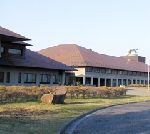
This small gold-copper Buddha is a bronze statue of the standing Kannon: the Buddhist Goddess of Mercy, retaining the appearance of the Asuka Buddha (645-710). This statue, on loan from Sansenji temple in Nagano city, is 29.7 cm in height.
This is one of the oldest Buddhist statues in Nagano prefecture, together with another bronze statue of Kannnon, that one sitting contemplatively in the half-lotus position in Matsukawa village. It’s facial expression is a smile, and the design of the clothes appear to approximate that of the Asuka Buddha.
This museum portrays the relation between nature and people, and praying in the Nagano Basin.
―This bronze statue of the standing Kannon Bodhisattva is exhibited for a limited time.
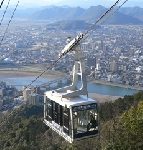
The area around Mt. Kinkazan overlooking the Nagara River was the sea, a long long time ago. It became a Rocky Mountain, with a steep grade, due to the long-term, crustal deformation. Currently, there are about 700 species of plants and 60 species of birds. You can feel the nature that remains from ancient times on the ropeway, and enjoy the spirit of Oda Nobunaga (1534 – 1582), the lord of this mountain castle, from the top of the mountain that controls the Mino domain.
He believed that the lord who controls Mino, controls Japan. Japanese style Painter Kawai Gyokudo (1873-1957) who painted Roshou Soyo, Old Pine Tree and Goshawk, loved the Nagara River and drew it in many his paintings.
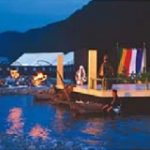
In the summer evening, Takiginoh, noh theater performed by a fire, has a 1,300 year history. It is held on a special stage of the riverbed, and shows the world of subtle and profound beauty.
The dance and sound penetrate deeply into Mt. Kinkazan overlooking the stage. The area around Mt. Kinkazan used to be the sea in ancient times. The rocks were raised by crustal movement over time, bringing out the mountain’s steep slopes. Later, an impregnable Castle was built on the summit.
Takiginoh was originally performed for the castle dedication, but is also dedicated to Mt. Kinkazan.
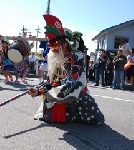
Kumakabuto Arakashiko Shrine in Nanao Ishikawa, enshrines a deity from the Korean Peninsula. In Noto Peninsula, attendants with Mikoshi, a portable shrine, are elegant and fantastic, with Andon, lamps with a paper shade, and facet lanterns.
Attendants with Mikoshi, in the Okumakabuto Festival, are Wakubata, have a woolen banner. Sarutahiko is the leader of Kunitsukami, the earthly deities, and a symbol of Misogi, the practice of ritual purification by washing the entire body.
“Sarutahiko” has a red face and high nose, and dances with a unique swing, in sync with the Taiko drum at the head of the parade. Then, the parade enters Otabisho, the place where the Mikoshi is lodged during the festival. Shimada kuzushi is performed, the feat to bring to the ground the 20m tall Wakubata.
You can experience the history from ancient times, which came from continental China and the Korean Peninsula, through its unique atmosphere.
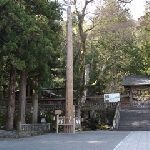
Suwa Taisha Shrine is one of the oldest shrines in Japan. It consists of 4 shrines. Kamisha, south of Lake Suwa, enshrine the gods. Shimosha, north of Lake Suwa enshrine the goddesses. Every seven years, since the Heian period (794-1192), the Onbashira Festival is held, where huge pillars of fir trees are rolled in to reconstruct the shrine.
The pillar is said to be the object of the gods of Mishaguji, a god in snake form with stones and trees as objects representative of a divine spirit that was worshipped in eastern Japan. It seems that the god has been syncretized with the lake dragon in Suwa.
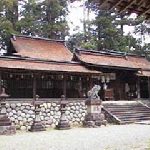
This shrine facing the Nagara River is wrapped in the sacred grove of the village shrine, which has plants favoring the warm climate in Mt. Tsurugata (348m). This shrine building is splendid and it is said to have been founded by a distinguished priest, Taicho Daishi (682 – 767), Great Priest.
This shrine is Maemiya, the front shrine of Mt. Hakusan Worship. It was said that each day there were one thousand worshippers who climbed Mt. Hakusan and one thousand worshippers who descended. This shrine was used by the 2nd Shogun of the Tokugawa shogunate to pray for recovery from illness. The successive shoguns of the Tokugawa shogunate devoutly worshiped this shrine.
This shrine has handed down the history of praying for Gokokuhojyo, a bumper crop, a huge harvest in the territory, every year, as one of ten purveying shinto priest clans to the feudal domain of Owari Tokugawa.
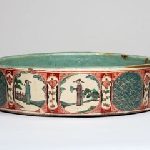
This museum introduces the rich history of Kuwana, with authenticity. Kuwana had been a key transportation hub, since ancient times. It connected the Kinai region, provinces surrounding Kyoto and Nara, with the Tosan-do Road, an ancient division of the country and the main road running through it, situated along the central mountains of northern Honshu, Tohoku region.
In Kuwana, timber from Kiso Province and goods from the Shogun demesne in Mino and Hida Province were gathered and supplied to Edo, during the Edo period (1603 – 1868). Kuwana flourished as a relay station to Edo.
Takahashi Haran was a painter in the first half of the 19th century. A flower basket woven with bamboo is often used in waka, Noh, and Kyogen, the classical comic theater developed from Sarugaku, a form of popular pantomime, with drum dancing, during the 11th -14th centuries. It is an important item that conveys a remnant of old Japan.
This collection shows Kuwana’s aesthetic sense to know authenticity, which does not forget traditional culture, even in modern times.

The Wajima Grand Festival is a festival where the goddess of Hegurajima Island, is located about 50km in the north from Noto Peninsula in the Japan Sea, meets the god of Wajima city once a year with the torches as a landmark. In the ritual of Torches, young people pull down the 12m torches and scramble for their Gohei, a wand with hemp and paper streamers.
In the ritual of entering the water, young man wearing colorful waistcloth of red and blue, carry Mikoshi, portable shrine and Mikoshi dances wildly for joy in the sea. The secret light, facet lanterns are elegant and fantastic attendants of Mikoshi and is the symbol to make harmony fire and water.
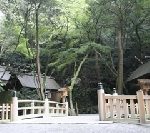
Mt. Tadosan (403m) has been worshiped as a holy mountain since ancient times. Amatsuhikone no mikoto, the son of the Sun Goddess, Amaterasu, the ancestor god of a powerful clan, Obito, is enshrined here. It is said that this shrine had been founded in the period of Emperor Yuryaku, of the Kawachi Dynasty in the 5th century. Worshippers have prayed for rain at this shrine since ancient times. A wide variety of small bronze mirrors were excavated from the site of this shrine.
These excavations include: 24 round bronze mirrors, 2 Hachiryukyo, eight-lobed bronze mirrors, 1 Rokuryukyo, six-lobed bronze mirror, and 3 Gokakyo, mirrors with a frame of five petals. Those tell the history that this shrine was revered as the Grand Shrine of Kitaise, the northern Ise province.
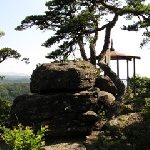
This temple was built in the beginning of the Heian period (794 – 1185), by Jigaku Daishi Ennin (794 – 864): the 3rd head of Buddhist Tendai sect, on his trip around the provinces. This temple is located at the foot of Mt. Akarusan in Kosaka Saku City.
Akasui, fragrant water, is Kudokusui, water that never dries up, in Buddhism. This temple is the sacred place of priest practices in seeking spiritual enlightenment, which has a 1,200 year history. A limpid spring springs out between rocks at the side of Kannon-do: temple dedicated to Kannon, the Buddhist Goddess of Mercy.
The way from Myosenji Temple, at the foot of the mountain, to the foot of Meisen-ji Temple to the Kannon-do with 100 stone images of Kannon, the Buddhist Goddess of Mercy, is a 30-minute hiking course. There remains Senju Kannon-do, a temple dedicated to Senju Kannon, the Buddhist Goddess of Mercy with a 1000 arms, a bell tower, and a lot of stone images of the Buddha, under the steep cliffs on the mid-slope.
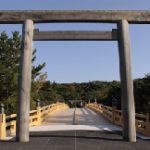
Yamatohime traveled around many provinces to seek an ideal place to enshrine Amaterasu Oomikami: Sun Goddess and the Japanese Emperors are considered to be direct descendants of Amaterasu. Isuzugawa River is also called the “Mimosuso River,” from the legend that Yamatohime rinsed her robe’s hem.
According to ancient custom, people used to purify their mind and body by the water from a limpid stream of Isuzugawa River. The Ujibashi Bridge, which crosses the Isuzugawa River at a right angle, is a bridge between the Ordinary world and the Sacred world.
The morning sun rises from the east of Mt. Shimajiyama for two months before and after the winter solstice, between the Torii, a front guard frame of Ujibashi Bridge.
In ancient Japan, the winter solstice was the beginning of a year.

Mt. Mitokusan, itself is in the precincts of this temple. This temple is a mountain of Shugendo, Japanese mountain ascetic practices. It has a history of 1,300 years since founded by En no Gyojya (Born 634), a Japanese ascetic and the founder of Shugendo. The National Treasure, Nageire-do Hall, is located in a cliff on the mid slope of Mt. Mitokusan around the Chugoku Mountains. It is said to have been thrown into the cliff by the magical power of En no Gyojya.
The thatched roof is Nagare Zukuri, a one gabled roof and a non-gabled roof on one side, which has camber and appears to have an ascending sensation, by the extending the front eaves. This hall has a go-round Passageway with Koran, a railing, on the west side, and is supported with various pillars.
You must submit an application and wear a Buddhist priest’s stole (lent to you for the visit), when you climb to the mountain.
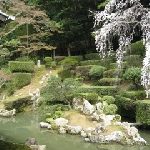
This temple was the sub-temple of Sokanji temple, built by Masuda Munekane, a samurai and the 17th head of a Masuda clan Iwami Province in the Muromachi Period (1366 – 1573). This temple was located on the premises of Sokanji temple. Only this temple remained. This temple has Somon, the main gate of the temple, in the style of Ryugu Zukuri, a two-story gate, called “dragon palace style.”
This style was characteristic of the Obaku sect of the Zen sects in Buddhism, which was introduced to Japan from China during the Ming Dynasty (1368 – 1644). The garden was designed by Sesshu Toyo (1420 – 1506), a Zen monk and the master ink painter in Japan. Sesshu who left Unkoku-en, the studio of Sesshu Toyo (1420 – 1506), a Zen monk and the master ink painter in Japan, around 1479. He became the 5th chief priest of Sokanji.
This garden overlapped with the mountain behind and expresses a different aesthetic in each season.

Iwami has a mysterious landscape of rock in the Tatamigakura area on the Togane coast of Kokubun Town, with round stone nodules that line up in parallel on the wave-cut platform. Rocks have also been the object of worship since ancient times. Kagura, was sacred music and dance in front of Iwato, a rock door, which invited the hidden Sun Goddess, Amaterasu Oomikami: Sun Goddess and the Japanese Emperors are considered to be direct descendants of Amaterasu, to go out.
The local Kagura is a village Kagura that expresses gratitude during the harvest season. You can see into the mythical world, through the Kagura, with the vigorous and fast-paced 8 beats.
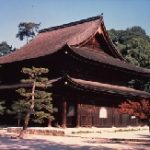
The statue of the principal image Yakushi Nyorai, the Buddha of Healing in the Kondo, the main hall of a Buddhist temple, is in the style of Buddhist sculptor Jocho (died 1057), which is a traditional Japanese-style from the Heian period (794 – 1185).
The Mandala of the Two Realms, Diamond Realm Mandala, and Matrix Realm Mandala were donated by the feudal lord of the Hiroshima Domain, Fukushima Masanori (1561 – 1624), who was a retainer of Toyotomi Hideyoshi (1537 – 1598): the powerful feudal lord and Imperial Regent who unified Japan, after the Battle of Sekigahara in 1600.
Those donated mandalas were produced during the middle of the Muromachi Period (1366 – 1573). The halo of Dainichi Nyorai, Supreme Buddha of the Cosmos and the central object in Esoteric sects of Buddhism, was painted with the same color in the Nara period (710 – 794) and used Ungen-Saishiki, an art technique in which thin bands with distinct colors are placed next to each other in order to give the impression of shading.
This is similar to Bokashi, a Japanese painting method that uses tones that shade into one another, without sharp outlines.

Kobo Daishi Kukai (774 – 835), the founder of the Shingon sect, was born in Sanuki Province, and at the age of 30, he traveled on an envoy ship to the Tang Dynasty (618 – 907). There, he studied not only Shingon Esoteric Buddhism, but also civil engineering. After returning to Japan, he contributed to the construction of Manoike Pond in Tado, which was the largest irrigation pond in Japan.
This museum introduces Kukai’s achievements throughout the year. This museum possesses the folding screen drawing of Takamatujo Castle Town, which is one of 8 folding screens. Takamatsujo Castle was a Sea Castle and an early modern castle in the early part of the Edo period (1603 – 1868). The scenery of the castle town, with details, like people drawing water from the well, is depicted clearly and gorgeously.
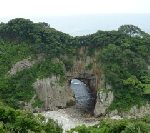
On the shoreline lit by the Cape Ashizuri Lighthouse, there is Hakusan Doumon, created by the marine erosion. It stands 16 m tall and 17 m wide. It is sea cave of granite which is the largest natural treasure in Japan. Even now you can get down to the basics that are washed in by the waves, but this sea cave was regarded as an object of worship since ancient times, and it was a symbol of religious training.
In the Medieval Ages, this cave was believed to be the eastern gate that lead to Mount Potalaka in the seas south of India, where the mythical dwelling of Kannnon, the Buddhist Goddess of Mercy.
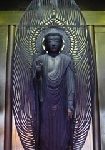
This temple was converted to Pure Land Buddhism in the Kanbun era(1661~1673)during the Edo period, by Matsudaira Yasuteru (1615 – 1675), the 1st lord of Hamada Domain, Iwami Province, Shimane, in order to perform religious rites for the salvation of a departed soul of his mother.
The principal image of this temple is the wooden standing statue of Amida: the principal image of Buddha in Pure Land, which was carved from one piece of cypress, and covered in gold leaf on Japanese lacquer with Gyokugan, eyes made of crystal. Amida of Shuubtsu: a Buddhist image printed in ink on cloth paper, was placed inside a Buddhist statue. It was written in Kana, Japanese syllabary, with Ink, that this statue was made in 1255, at the statue’s hollow interior.
This statue was welcomed later to this temple, which was a model work in the Kamakura period (1185 – 1333), and is National designated cultural property.

This museum exhibits a short sword, bearing an inscription of Kiyomaro,(Minamoto Kiyomaro (1813- 1855) , a renowned swordsmith in the end of Edo period), which has a bright blade surface and the strength of Kinsuji, the bright thick line pattern on the blade.
This museum introduces Omote Dogu, official utensils of the samurai family, arms and armor, as the culture of life and death, and various tools and art works of life to sustain samurai as the daily culture. Since ancient times, samurai have been rooted in the earth, always putting death in front of them, and trying to repeat their days of realizing life.
Samurai had rooted on the ground, kept the fate of death in their mind, and tried to feel the art of living each day.
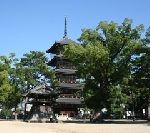
The temple was built by Kobo Daishi Kukai (774 – 835), the founder of the Shingon sect, in 813, on the land donated by Kukai’s father, Saekino Atai Tagimi. Kukai copied the Shoryuji (Qinglongsi) Temple in Choan (Xian city) from China’s Tang Dynasty (618 – 907). This was where Kukai’s master, Keika (746-805), the seventh founder of the Shingon sect of Buddhism, served as chief priest.
The Treasure Hall holds 20,000 items, including the important cultural properties, including the Statue of Jizo Bossatsu, a guardian deity of travelers and children, the Kichijoin Standing Statue, and other scriptures, sacred books and ancient documents.
Those treasures are the testimony of Kukai, who brought East Asian and Esoteric Buddhism back to Japan.
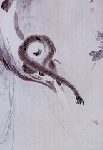
This museum is located at the eastern end of the Kanmon Strait, which is known for being the end of the Genpei War, the battle between the Taira and Minamoto clans in the 12th century, and the birthplace of the Meiji Restoration, an event that sectored practical imperial rule of the Empire of Japan in 1868, under Emperor Meiji.
This museum introduces Kanou Hogai (1828 – 1888), the last Japanese artist of the Kanou school, who was Goyo-eshi, a purveying painter to the Chofu Domain, in the End of the Edo period. Hogai drew Koboku Enko-zu, a picture of a monkey in dead trees, in which a gibbon extends its long hand to catch a bee by its fingers.
Hogai learned well the art of painting monkeys from three masters: Sesshu Toyo (1420 – 1506), a Zen monk and the master of ink painting in Japan in the Muromachi Period (1366 – 1573), Hasegawa Tohaku (1539 – 1610), a Japanese painter and founder of the Hasegawa school, in the Azuchi-Momoyama period (1573 – 1603), and from Mokkei (1210 – 1269), Chinese Zen monk and ink painter in Southern Son Dynasty (1127 – 1279).

The beginning of this shrine was described at Tenjin emaki, Illustrated Legends of this shrine dedicated to Sugawara no Michizane (845 – 903), who was a scholar, poet, Udaijin, the Junior Master of Stage, and revered as the god of learning. When Michizane died in Dazaifu, Fukuoka in 903 (Yenki 3), a light glow appeared on the sea, and Zuiun, a glory cloud covered Mt. Sakatariyama.
The following year, a shrine in Matsugasaki, Hofu was built to enshrine the spirit of Michizane, and the mountain was eventually called Tenjin mountain. This mountain was indicated to be a sacred place since ancient time by the excavation of a sword with Head Ornaments that have a decorated sword handle with a ring head, and many other ancient items remain here.

The five-storied pagoda of Rurikoji Temple was built by Ouchi Moriharu (1377 – 1431): the Shugo, Governor of Suo and Nagato Provinces, Yamaguchi, and Buzen Province, Fukuoka-Oita, and the 26th head of the Ouchi Family. By building this pagoda, Moriharu performed religious rites for the salvation of the departed soul of his brother, Ouchi Yoshihiro (1356 – 1400) : the Shugo, Governor of Suo and Nagato Provinces, Yamaguchi, Buzen Province, Fukuoka-Oita, Izumi Provice, Osaka, and Kii Province, Wakayama, and the 25th head of Ouchi Family.
Yoshihiro was defeated and died in the Onin War (1467 – 1477), in the controversy over the successor of Ashikaga Shogun between Hosakawa Katsumoto (1430 – 1473) who was Ashikaga Shogun’s deputy, and Yamana Sozen (1404 – 1453) who was Shugo, Governor of Provinces in the western part of Japan. The upper layer of this pagoda is thinner and beautifully harmonized with Hiwadabuki, a cypress bark roof, with a light curvature.
The harmony conveys elegantly Ouchi Culture in Yamaguchi during the the Muromachi Period (1366 – 1573). Sesshu Toyo (1420 – 1506), the Zen monk and the master ink painter who traveled to China, by Kenminsen, envoy ships dispatched to the Ming dynasty (1368 – 1644), by the Ouchi clan, in the year of the Onin War.
After the Onin War ended, Ouchi based Hogyo Harbor, Hyogo and Hakata Harbor, Fukuoka, fought over overseas trade with the Hosokawa clan based in Sakai Harbor, Osaka. The Ouchi clan had eventually monopolized the Kango Trade, licensed trade between Japan and the Ming dynasty (1368 – 1644).

Mishima Shrine was founded in 774, when the Uwakai sea was close to this shrine.
At the time, the domineering Fujiwara clan in the Imperial Court and natural disasters had continued after Emperor Konin (709 –782) was enthroned.
This shrine possesses seven statutes of Japanese gods in the late Kamakura period in the 13th -14th centuries have a rich expression caved of one tree. The statues and a Hanging Buddha image plate convey the greatness and true richness of the Uwakai Sea, connected with Kuroshio, the Japan Current, which continues since ancient times.
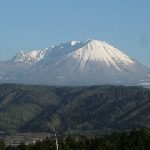
Mt. Daisen is an independent volcano and the highest mountain in the Chugoku region, which is also known as ” Hokifuji: Mt. Fuji in Hoki Province, for its shape looks like Mt. Fuji”. However, the north rock surface of the 2km folding screen type rock face, which formed a steep cliff by a small explosion, erosion and collapse, is rough and masculine.
It was recorded as “Mt. Okami no take” or ” Mt. Hinokami no take” in the Izumo Province Fudoki (description of Japanese regional climate, culture, and others) compiled during the Nara period (710 – 794), and has a history that has been worshiped since ancient times.
The special natural monument Daisen-Carabok grows near the top of the mountain and Mt. Daisen is a treasure trove of Alpine plants and wild birds.

Sesshu Toyo (1420 – 1506), a Zen monk and the master ink painter in Japan, stayed in Yamaguchi with the support of the Ouchi clan, one of the most powerful feudal lords of the Ashikaga Shogunate in the 12th – 14th centuries. He settled there, after going to China to study, during the Song Dynasty (960 – 1279), on the Ouchi clan’s trading boat. He left in Yamaguchi masterpieces like the National Treasure Shiki Sansuizu, Four Seasons Landscape, which he drew from his memory, with high realism.
His memory of landscapes extended to garden design. He designed the garden remains at this temple. The arrangement of stones in the traditional Chinese Zen-style and the subtle changes in the Japanese four seasons, make a beautiful harmony
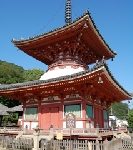
This temple, located at the foot of the Jyodoji Mountain Observatory, is considered to be founded by the Prince Shotoku (574 – 622). This temple enshrines the statue of an eleven-faced Kannnon, the Buddhist Goddess of Mercy and has the cathedral that was attended by the First Ashikaga Shogun, Takauji Ashikaga (1305-1358).
In 1336, Takauji stopped here from Onomichi, before going on to Kyushu in order to recover from the battle and retreats. He chanted 10,000 volumes of the Kannon sutra, to the statue of the eleven-faced Kannon: the Buddhist Goddess of Mercy, and sang 33 waka poems, to realize his earnest wishes.
He successfully recovered and returned from Kyushu Island to Kyoto, the state capital. His earnest prayers came true, from this temple.
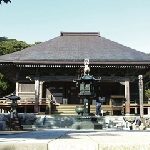
This temple stands on Cape Ashizuri. The cape was thought to be the site of the east gate leading to Mount Potalaka in the seas south of India, the mythical dwelling of Kannon: the Buddhist Goddess of Mercy. This temple was established by Kobo Daishi Kukai (774 – 835): the founder of the Shingon sect, in 822, when Emperor Saga (786 – 842) gave Kukai an Imperial scroll of “Fudaraku Tomon – the east gate leading to Mount Potalaka” written by the Emperor himself.
This temple had been worshiped by successive Imperial families. A family of the Minamoto clan, the head clan of the samurai, adored this temple and built Tahoto, a two-story pagoda with a square base, pent roof and a round top. Izumi Shikibu (Born 876) was a Japanese female poet and a femme fatale with numerous lovers.
She pilgrimaged to this temple during the Shikoku Pilgrimage, a multi-site pilgrimage of 88 temples associated with Kobo Daishi Kukai (774 – 835), the founder of the Shingon sect. She buried her black hair, as a prayer to cut off her worldly passions.
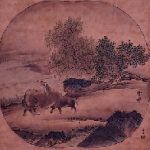
This museum has many works of: Sesshu Sesshu Toyo (1420 – 1506), a Zen monk and the master ink painter in Japan, in the Muromochii Period (1366 – 1573), the Unkoku school of painting, founded by Unkoku Togan (1547 – 1618), of Kanga, a school of Chinese painting in Japan, Kanou Hogai (1828 – 1888), the last artist of the Kanou school, and Mori Kansai (1814 – 1894), a Japanese Painter, in the Meiji period (1868 – 1912), and Kazuki Yasuo (1911 – 1974), a Japanese Painter and Matsuda Shohei (1913 – 2004), a Japanese Painter in the days after the 2nd World War.
Hogyuzu, the painting of pasturing cattle, was influenced by the authority in Song Dynasty (960 – 1279), which divides the paper in the shape of a paper fan. It is 31.5 cm long and 33.5 cm wide in the mounting of hanging scrolls, which mimicked the work of Li Tang, a Chinese painter who worked in the style of the Song Dynasty (960 – 1279). Sesshu made it before his drawing his National Treasure Shikisansuizu, Landscape of the Four Seasons, (Sansui Chokan, Long Landscape Scroll), around 1470.
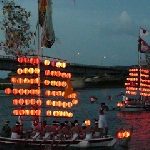
The Takatsugawa River boasts one of Japan’s foremost water quality, and a powerful warrior in the Age of Provincial Wars in the 15th – 16th centuries, Mouri Motonari (1497 – 1571) feudal lord in the western Chugoku region of Japan, to extend his clan’s power to nearly all of the Chugoku region received Hoshi-ayu, dried sweet fish of the Takatsugawa River, from Masuda Fujigane (1529 – 1597), feudal lord in Iwami Province to serve Mouri clan, after to serve Ouhi clan, as an offering.
There is a legend that the spirit of Yamata no Orochi, eight-headed giant snake in Japan mythology, which escaped from Izumo Province to the Takatsu River, and the water had boiled to become a river. In June, dragon snake made of straw are carried into the pond of the reviver’s water source by several people.
There are dance in the dynamic style to pray for rain, Mikoshi, portable shrine with lantern in riverboats to be lined up and the art of fireworks in the night sky.

This museum is a rare museum that specializes in displaying Japanese swords, which exhibits 41 pieces, as their permanent exhibition.
Bizen Province has been blessed with good-quality sand iron in the Yoshii River basin since ancient times, and swords have been produced. Bisen Osafune had suppled long warped swords to Emperors and courtiers in Kyoto since the middle of the Heian period (794 – 1185).
As demand for the swords increased, during the period of the Northern and Southern Courts (1336 – 1392) and the Muromachi Period (1366 – 1573), they transformed from a system of a few apprentices to mass production, through the division of labor.
Bizen Osafune became the armory of Japan, as its peak in the Age of Provincial Wars in the 15th – 16th centuries.
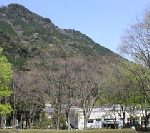
Tendai and Esoteric Buddhism, and Shugendo: Japanese mountain ascetic practices, had spread in the mountain villages of Buzen and Bungo Provinces until around 1870, in Haibutsu Kishaku (abolish Buddhism), the event triggered by the official policy of separation of Shinto and Buddhism, which caused great damage to Buddhism in Japan after 1868.
The sacred place was Mt. Kubotesan which is a cone-shaped mountain (Height 782m). Andesite lava are scattered everywhere in the mountains, and that shows that the mountain used to be an active volcano.
The ancient Sue ware was excavated and the history of the mountain of fait seems to have begun since the Tumulus period (the 3rd– 7th century). This museum located the foot of the mountain possesses and exhibits materials related to Shugendo of Mt. Kubotesan.
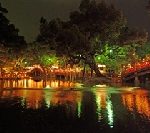
Sentomyo, is the ceremony of a thousand candles, which are lit in the Shinjiike pond, a heart-shaped pond, which is one of the autumn festivals of the shrine and Jinkoshiki, the God-Procession Festival. This ceremony started to dedicate the soul of Sugawara no Michizane (845 – 903), who was a scholar, poet, Udaijin, the Junior master of Stage, and revered as the god of learning, in the Heian period (794 – 1185).
This ceremony was organized by Ooe Masafusa (1041 – 1111), who was Dai no gon no sochi, a chief secretary of the government of Kyushu, in the Heian period (794 – 1185), 200 years after Michizane’s death. This ceremony had been handed down since that time, at this shrine.
The three bridges of the Shinjiike pond represent the past, present, and future aspects of Buddhism. It is said that crossing those bridges cleans up the evil thoughts in these three aspects and purify the mind and body.
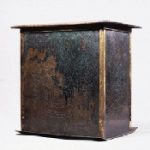
During the Heian period (794 – 1185), monks who practiced at Mt. Kubotesan, part of the Tsukushi Mountains in Fukuoka Prefecture, were afraid of Mappo-no-yo, the destined downfall of Buddhism. They buried sutras on bronze plates in a cave in the mountain. These line-engraved 8 volumes of Lotus Sutra, and Hannya Shingyo, the Heart of Great Perfect Wisdom Sutra, were intended to be preserved for the future.
This culture property consists of the 33 sheets of bronze plate and a bronze box which was a line-engraved Amida: the principal image of the Buddha in Pure Land triad: Amida attended by two Bosatsus, Buddhas.
There is Taho-nyorai, the Buddha of Many Treasure. To one side, Bishamonten, the Guardian god of Buddhism, and to the other side, Fudo Myoo, the God of Fire. This is a rare example of the complete form of bronze plates and bronze box.

61 Magaibutsu, Buddha statues in a natural rock wall, are designated as National Treasures. Many Magaibutsu were made, along with mountain worship, which did Shinbutsu-shugo, the syncretism of Shintoism and Buddhism, in the Heian period (794 – 1185). Usuki Magaibutsu were carved in the villages, not in the mountains, from the late Heian period to the Kamakura period (1185 – 1333).
At that time, the expressive appearance of the Buddha gives a peace of mind to the viewer. It is said that a rich person in the village made Usuki Magaibutsu. That taste is different from Magaibutsu in the mountains.
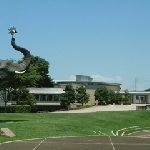
This museum is located at the top of the Uenono Forest on the hillock, and is a museum in the full of nature. It holds 7 to 8 special exhibitions a year. You can always enjoy Japanese modern and contemporary Japanese paintings, Bungo Nanga, Japanese Paintings of the literary school in the Edo period (1603 – 1868), paintings of the Southern Son Dynasty (1127 – 1279), in Bungo Province Oitta, Western paintings, bamboo crafts, contemporary art works, etc.
In addition to the museum shop and restaurant, there is a walking path with outdoor sculptures in the park, where you can enjoy nature observation and forest bathing.
– Tanomura Chikuden (1777 – 1835) was a painter of Bungo Nanga. He learned various styles from interacting with many people, such as Kimura Kenkado (1736 – 1802), a Japanese scholar artist and art connoisseur. And he reached the painting with delicate and profound aesthetics and created vigorously in his later years.

This temple is said to have been built in the Tempyo era (729 – 749) in the Nara period (710 – 794). It possesses Hibutsu, a hidden Buddhist image, ordinarily withheld from public view, of the statue of Senju Kannon, the Buddhist Goddess of Mercy with a 1,000 arms, and the statue of an eleven-faced Kannon.
This temple is located at an altitude of 300m overlooking the Wakamiya Basin, which is an eastward alluvial fan, where the sunrise and sunset are fast, creating a large change in temperature.
A sea of clouds comes in the morning, with the moisture, the day before it rains. The sea of clouds wraps Sanmon, the main gate of the temple, and the five-storied pagoda, which has a 350 year history, and Natural Monument junipers, which is the 2m trunk of a tree, and overlooks the buildings of the temple.
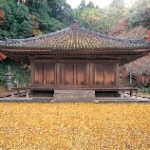
This temple is one of the few architectures in the style of the Heian period (794 – 1185), located outside the Kinki region. Shinbutsu-shugo, the syncretism of Shintoism and Buddhism, began at Usajingu Shrine, Oita and spread to Kunisaki Peninsula. Kumano Magaibutsu – Buddha statues in a natural rock wall, were made at temples of mountain worship.
On other hand, this temple was “Sato no Tera – a temple built at the manor in the village”. This temple shows the richness of Heian Buddhist art, along with the 9 statues of Buddha enshrined at the adjacent temple, Maki Odo.
Those Buddha statues convey the remnant of Motoyama Hachikaji, one of 8 head temples in Kunisaki Rokugo-Manzan, a group of Tendai sect temples in Kunisaki Peninsula.
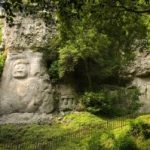
Kumano Magaibutsu, Buddha statues in a natural rock wall appears, after you climb the natural stone stairs roughly piled up on the mountain path of Taizoji Temple It is said that the Magaibutsu was made in the end of the Heian period (794 – 1185). There are Fudo Myoo, 8m tall Wisdom Kings to lead people with austerity, and 6m tall Dainichi Nyorai, the Supreme Buddha of the Cosmos and the central object in Esoteric sects of Buddhism, carved on the huge natural rock wall on the left side of the path. Those expressions are deep and calm.
This place is the starting point of Mineiri no Aragyo, a rigorous ascetic exercise of monks, to encounter sacred places in Kunisaki Peninsula, through steep roads and mountains. These are traditional events of Rokugo-Manzan, a group of Tendai sect temples in Kunisaki Peninsula.
The Magaibutsu and the event convey the history that Shinbutsu-shugo, the syncretism of Shintoism and Buddhism, began at Usajingu Shrine, Oita and spread to Kunisaki Peninsula in the Heian period (794 – 1185).
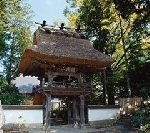
This temple is located 500 meters from Kinrinko Lake and is the main guardian deity of Mt. Yufudake. The Torii, a gateway at the entrance to a Shrine, floats on Kinrinko Lake and belongs to this temple, although it was moved by Haibutsu Kishaku (abolish Buddhism), the event triggered by the official policy of the separation of Shinto and Buddhism. This caused great damage to Buddhism in Japan after the Meiji Restoration in 1868, when the government sectored practical imperial rule of the Empire of Japan in 1868 under Emperor Meiji.
This temple started by Shoku Shonin (910 – 1007), a priest of the Sendai sect, who had a hermitage on the mid-slope of Mt. Yufudake, thousands of years ago. This temple moved here from the mid-slope by the earthquake in the Keicho era (1596 – 1615) of the Edo period (1603 – 1868).
In the early morning of every weekend, Zazenkai, a practice of Zen Meditation, and Shakeikai, a gathering of hand-copied sutras, are held for anyone to participate.
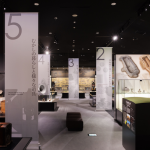
This museum reopened after renovation on September 23, 2020. The history, archeology, folklore, and art of Nobeoka City from prehistoric times to modern times are introduced at the Permanent Exhibition, and three full-scale reproductions of a pit dwelling, an old folk house, and an apartment complex are displayed at the Reproduction Exhibition of the surroundings. Themed and special exhibitions centering on domestic and foreign artworks are also held.
The previous Nobeoka Naito Memorial Hall was built at the site of the Palace of the Naito family in Shiroyama Park. This park is also the site of Nobeokajo Castle, which possesses a Noh mask named Tenkaichi, “the best on earth” and Daimyodougu, Japanese feudal lords’ belongings.
The Naito family were Hereditary feudal lords. They came to this region from the Iwakidaira Domaine in Fukushima. They were forced to relocate here by a daimyo, a feudal lord in a different domain, under the Tokugawa Shogunate’s rule.
The Naito family supported the Tokugawa shogunate. They had governed Nobeoka until the Meiji period (1868 – 1912). Nobeoka Tenkaichi Firewood Takiginoh, noh theater performed at night by a fire, is held in October against the backdrop of the “One Thousand Murdered Soldiers” stone wall at Ninomaru’s second bailey, the Plaza at the site of Nobeokajo Castle.
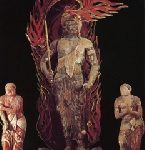
Shinbutsu-shugo, the syncretism of Shintoism and Buddhism, began at Usajingu Shrine, Oita and spread to Kunisaki Peninsula in the Heian period (794 – 1185). Kumano Magaibutsu – Buddha statues in a natural rock wall, was made at temples of mountain worship.
On other hand, this temple was “Sato no Tera – a temple built at the manor in the village”. This temple was a temple of Motoyama Hachikaji, one of 8 head temples in Kunisaki Rokugo-Manzan, a group of Tendai sect temples in Kunisaki Peninsula. It was the largest temple in Rokugo Manzan.
There are the 9 statues of Buddha statues stored in the Treasure house, which convey the remnant of Motoyama Hachikaji, and the richness of Heian Buddhist art.
